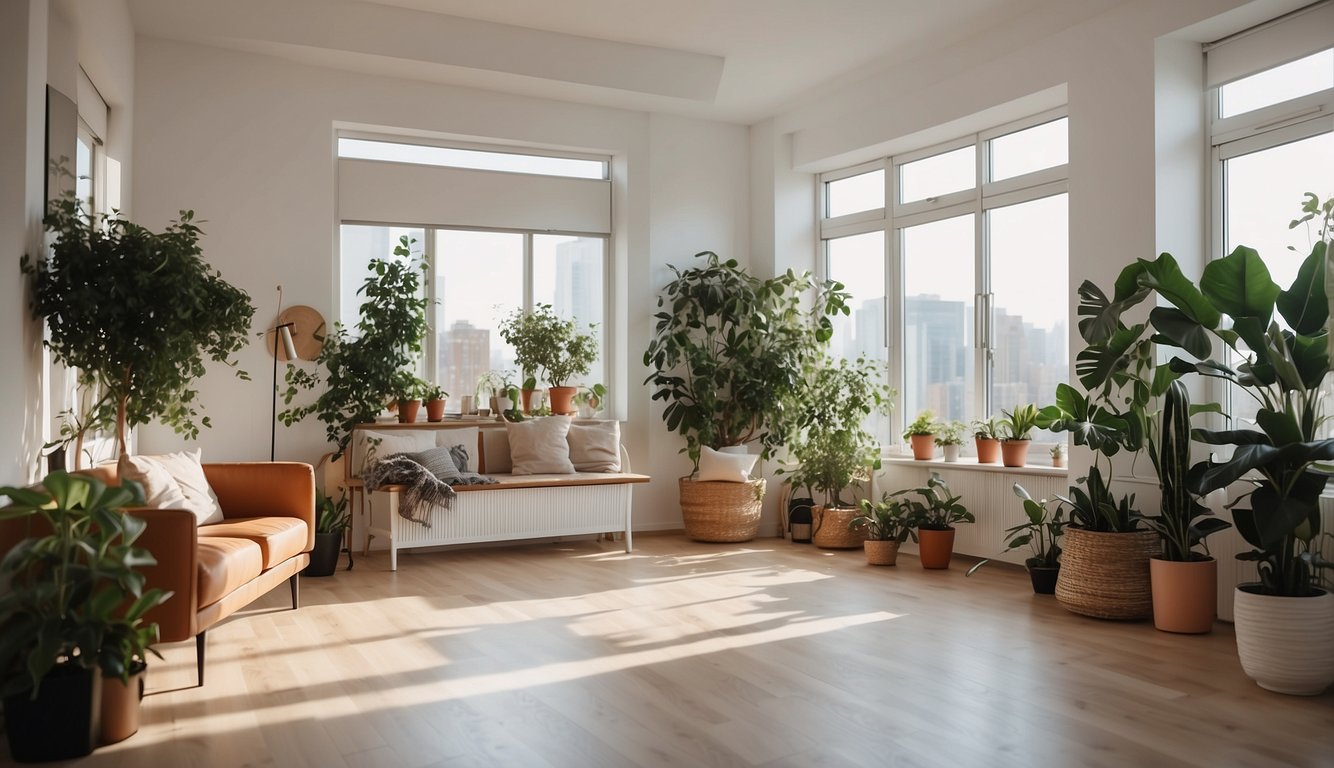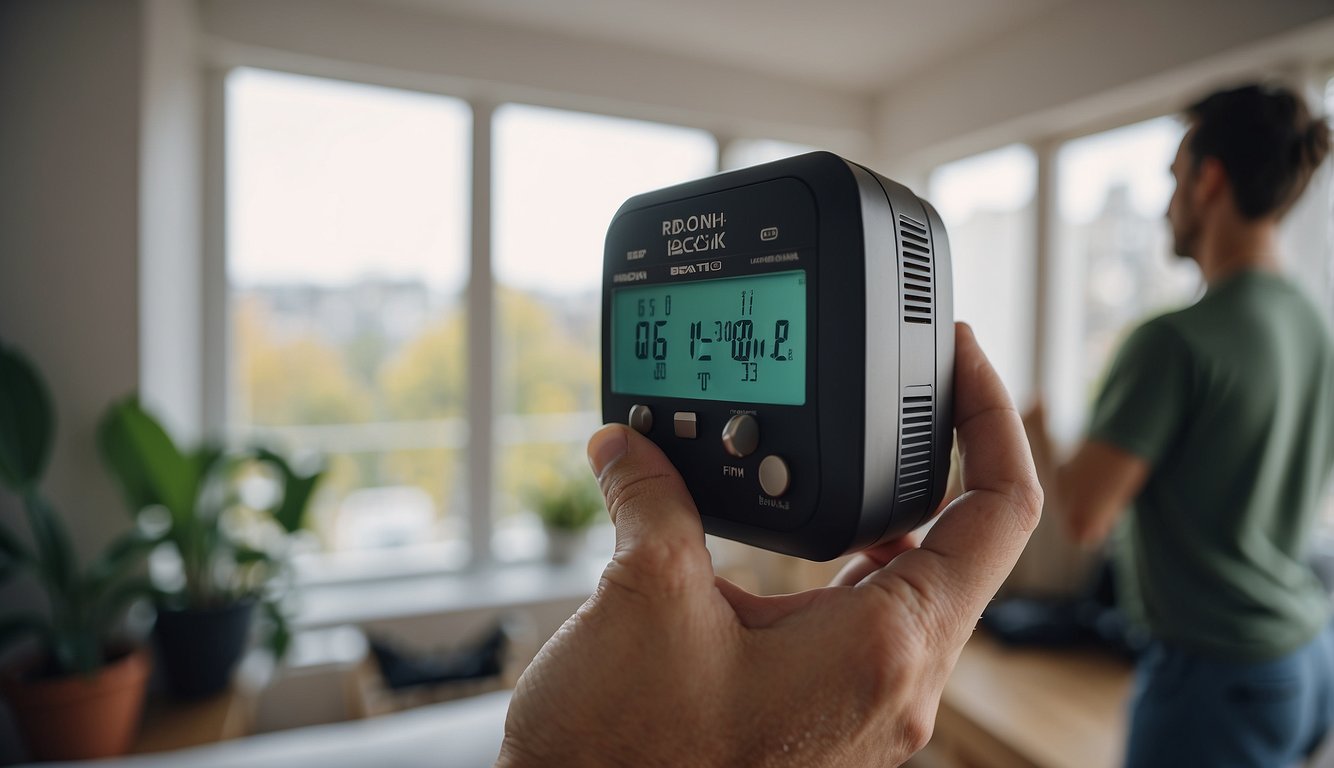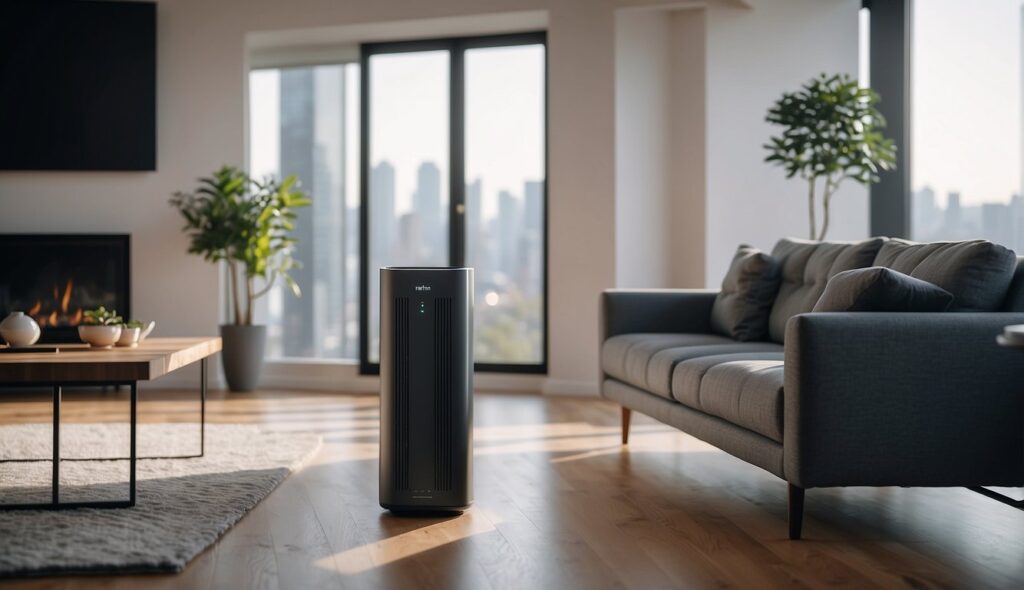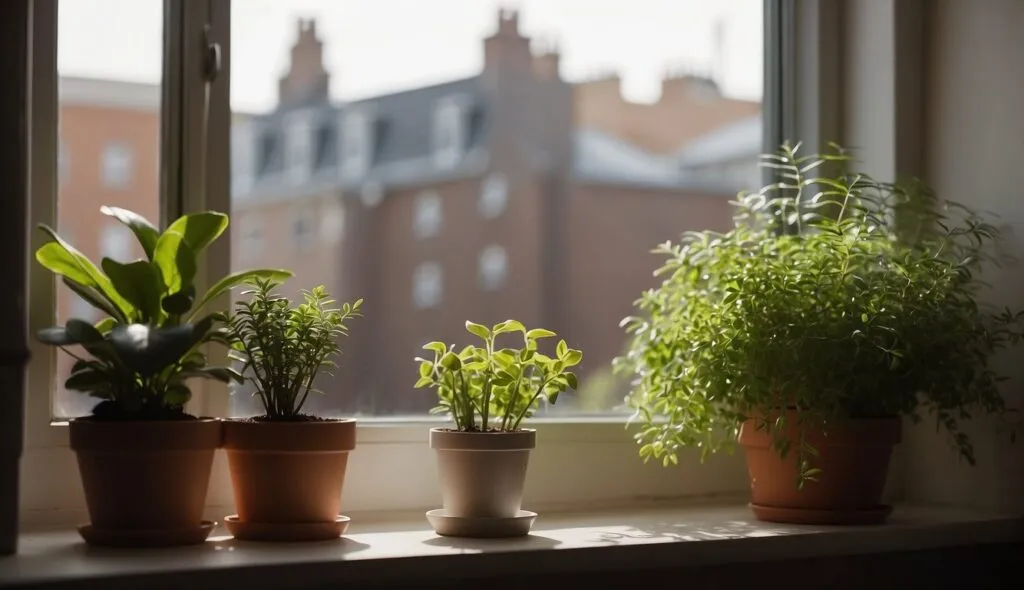Improving air quality in an apartment can be a challenge, especially if you live in a densely populated area or near a busy road. Indoor air quality can be affected by a variety of factors, including the presence of allergens, pollutants, and other airborne contaminants. Poor air quality can lead to a range of health problems, from respiratory issues to headaches and fatigue.

Indoor air quality refers to the quality of the air inside a building or structure, including homes, offices, and apartments. Poor indoor air quality can be caused by a variety of factors, including the presence of allergens, pollutants, and other airborne contaminants. These contaminants can come from a variety of sources, including cleaning products, tobacco smoke, pet dander, and outdoor air pollution.
Poor air quality can have a range of negative health effects, including respiratory problems, headaches, fatigue, and dizziness. In some cases, poor air quality can even lead to serious health problems, such as heart disease and cancer. It is important to take steps to improve indoor air quality in order to protect your health and well-being.
Table of Contents
Key Takeaways
- Poor indoor air quality can lead to a range of health problems, from respiratory issues to headaches and fatigue.
- Indoor air quality can be affected by a variety of factors, including the presence of allergens, pollutants, and other airborne contaminants.
- Improving air quality in an apartment can be achieved through a variety of methods, including the use of air purifiers, proper ventilation, and regular cleaning.
Understanding Indoor Air Quality

As we spend more time indoors, it is important to understand the quality of the air we breathe. Indoor air quality (IAQ) refers to the air quality within and around buildings and structures, especially as it relates to the health and comfort of building occupants. Poor IAQ can have negative effects on our health, including respiratory problems, headaches, fatigue, and allergies.
Indoor air pollutants can come from a variety of sources, including mold, allergens, pollutants, particles, humidity, and gases. Mold can grow in damp areas and release spores into the air, which can cause respiratory problems. Allergens such as dust mites, pet dander, and pollen can also cause respiratory problems and allergies. Pollutants such as carbon monoxide, nitrogen dioxide, and volatile organic compounds (VOCs) can come from sources such as gas stoves, tobacco smoke, and cleaning products. Particles such as dust, dirt, and soot can also be present in indoor air.
Humidity levels can also affect IAQ. High humidity can promote the growth of mold and dust mites, while low humidity can cause dry skin and respiratory problems. Proper ventilation is important for maintaining good IAQ. Ventilation can help remove pollutants and bring in fresh air. The Environmental Protection Agency (EPA) recommends increasing ventilation rates when possible and using air cleaners to remove pollutants from the air.
In summary, understanding IAQ is important for maintaining a healthy and comfortable indoor environment. Sources of indoor air pollutants such as mold, allergens, pollutants, particles, humidity, and gases should be identified and eliminated or reduced when possible. Proper ventilation and the use of air cleaners can also help improve IAQ.
Health Effects of Poor Air Quality
As we spend most of our time indoors, it’s crucial to ensure the air we breathe is clean and healthy. Poor indoor air quality can lead to various health problems, including respiratory symptoms, allergies, and heart disease.
Exposure to indoor air pollution can cause respiratory symptoms such as coughing, wheezing, and shortness of breath. It can also trigger allergic reactions and asthma attacks. In the long term, exposure to indoor air pollution can increase the risk of lung cancer and heart disease.
Young children and older adults are particularly vulnerable to the health impacts of poor indoor air quality. Children’s lungs are still developing, and they breathe more air per pound of body weight than adults. Older adults may have weakened immune systems, making them more susceptible to respiratory infections.
To improve indoor air quality, it’s essential to identify and remove sources of pollution. Common indoor air pollutants include tobacco smoke, mold, pet dander, and volatile organic compounds (VOCs) from cleaning products and building materials.
Regular cleaning and maintenance of heating, ventilation, and air conditioning (HVAC) systems can also help improve indoor air quality. Installing air purifiers and air filters can also reduce indoor air pollution levels and improve air quality.
In summary, poor indoor air quality can have serious health consequences. It’s essential to take steps to improve indoor air quality to protect our health and wellbeing.
Sources of Indoor Air Pollution
When it comes to indoor air quality, there are many sources of pollutants that can affect the air we breathe. Some of the most common sources of indoor air pollution include:
Mold Spores
Mold spores are a common indoor air pollutant that can cause health problems such as allergic reactions, respiratory problems, and asthma. Mold can grow in damp areas such as bathrooms, kitchens, and basements.
Smoke
Smoke from tobacco, cooking, and wood-burning fireplaces can all contribute to poor indoor air quality. Smoke contains harmful chemicals and particles that can cause respiratory problems and other health issues.
Radon
Radon is a naturally occurring gas that can seep into homes through cracks in the foundation. Radon is the second leading cause of lung cancer in the United States and can be a serious health hazard if not properly addressed.
Carbon Monoxide
Carbon monoxide is a colorless, odorless gas that is produced by the incomplete combustion of fuels such as gas, oil, and wood. Carbon monoxide can cause headaches, dizziness, nausea, and in severe cases, death.
Volatile Organic Compounds (VOCs)
Volatile organic compounds (VOCs) are chemicals that are emitted by a wide range of household products, including paints, cleaning products, and air fresheners. Exposure to VOCs can cause eye, nose, and throat irritation, headaches, and dizziness.
Formaldehyde
Formaldehyde is a colorless gas that is used in many building materials, including insulation, plywood, and particleboard. Exposure to formaldehyde can cause eye, nose, and throat irritation, as well as respiratory problems.
Tobacco Smoke
Tobacco smoke is a major contributor to indoor air pollution and can cause a wide range of health problems, including respiratory problems, heart disease, and cancer.
Household Products
Many household products, including cleaning products, pesticides, and air fresheners, can release harmful chemicals into the air and contribute to poor indoor air quality.
Contaminated Ventilation Systems
Contaminated ventilation systems can spread pollutants throughout a building and contribute to poor indoor air quality. Ventilation systems should be properly maintained and cleaned to prevent the spread of pollutants.
Outdoor Air Intakes
Outdoor air intakes can bring pollutants from outside into a building. Properly designed and maintained ventilation systems can help prevent this from happening.
Pollution Sources
Pollution sources such as factories, traffic, and construction sites can also contribute to poor indoor air quality if they are located near a building.
Furnishings and Indoor Sources
Furnishings and indoor sources such as carpets, upholstery, and building materials can release harmful chemicals into the air and contribute to poor indoor air quality.
Overall, it is important to be aware of the sources of indoor air pollution and take steps to reduce exposure to these pollutants. Proper ventilation, regular cleaning, and the use of air purifiers can all help improve indoor air quality.
Improving Air Quality in Your Home
When it comes to improving air quality in your apartment, there are several strategies you can implement. In this section, we will cover effective ventilation strategies, air cleaning technologies, and controlling humidity and moisture.
Effective Ventilation Strategies
One of the easiest ways to improve air quality in your apartment is to increase ventilation. Opening a window is a simple and effective way to bring fresh air into your home. However, this may not be possible during certain times of the year, depending on the climate where you live. In this case, you can increase ventilation by using exhaust fans in the kitchen and bathroom. This can help remove pollutants and moisture from the air.
Air Cleaning Technologies
Air cleaning devices such as HEPA filters and air purifiers can also help improve air quality in your apartment. HEPA filters are designed to capture particles as small as 0.3 microns, making them effective at removing pollutants such as dust, pollen, and pet dander. Air purifiers use a combination of filters and air cleaning technologies to remove pollutants from the air.
Controlling Humidity and Moisture
Excess humidity and moisture can lead to air quality problems such as mold and mildew growth. To control humidity levels, consider using a dehumidifier in areas of your apartment that are prone to moisture buildup, such as the bathroom or basement. If the air in your apartment is too dry, a humidifier can help add moisture to the air.
Regular maintenance activities such as changing air filters and cleaning air ducts can also help improve air quality in your apartment. By implementing these strategies, you can create a cleaner and healthier living environment for you and your family.
Detecting and Mitigating Radon

Radon is a radioactive gas that can seep into homes through the foundation or cracks in walls and floors. It is odorless and colorless, making it difficult to detect without proper testing. Radon exposure has been linked to lung cancer, so it is important to test for and mitigate radon in your apartment.
We recommend using a radon test kit to detect the presence of radon in your apartment. These kits are inexpensive and easy to use. They typically include a small device that you place in your apartment for a specified amount of time, usually a few days to a week. The device will then be sent to a lab for analysis.
If the test results show that there is a high level of radon in your apartment, we recommend contacting a professional to mitigate the issue. Radon mitigation involves installing a ventilation system that will remove the radon from your apartment and vent it outside. This process can be expensive, but it is necessary to ensure the air quality in your apartment is safe.
In addition to testing and mitigation, there are some steps you can take to reduce your exposure to radon. You can seal any cracks or gaps in your walls and floors to prevent radon from entering your apartment. You can also increase ventilation by opening windows and using fans to circulate air.
Overall, detecting and mitigating radon is an important step in improving the air quality in your apartment. We recommend using a radon test kit to detect the presence of radon and contacting a professional for mitigation if necessary.
Conclusion

Improving apartment air quality can be achieved through a variety of methods, including source control, ventilation, and air filtration. By identifying and eliminating sources of pollution, such as smoking, cooking, and cleaning products, we can significantly reduce indoor air pollution levels. Additionally, proper ventilation and air filtration can further enhance air quality by removing pollutants and introducing fresh air.
For building owners and homeowners, investing in renovations or remodeling projects that prioritize indoor air quality can have long-term benefits for both health and property value. Using low-emission interior building materials and building materials that have been certified for low chemical emissions can also help to reduce indoor air pollution levels.
In our article, we have covered various methods for improving apartment air quality. By taking a comprehensive approach and implementing a combination of these methods, we can create a healthier and more comfortable living environment. It is important to note that while these methods can significantly improve indoor air quality, they should not be seen as a substitute for seeking medical advice or treatment for respiratory conditions.
Frequently Asked Questions
What are effective natural methods to enhance indoor air quality?
There are several natural methods to improve indoor air quality. Some of the effective ways are:
- Use indoor plants: Indoor plants can help in purifying the air by absorbing pollutants and releasing oxygen. Some of the best air-purifying plants are snake plant, spider plant, peace lily, and aloe vera.
- Open windows: Ventilation is crucial to maintain good air quality. Open windows to allow fresh air to circulate and remove indoor pollutants.
- Use natural cleaning products: Chemical cleaning products release toxic fumes that can harm indoor air quality. Use natural cleaning products like vinegar, baking soda, and lemon juice to clean your apartment.
- Avoid smoking indoors: Smoking indoors can release harmful chemicals that can affect indoor air quality. Avoid smoking indoors and make your apartment a smoke-free zone.
What steps can tenants take to address poor air quality in their apartments?
If you are a tenant and experiencing poor air quality in your apartment, you can take the following steps:
- Identify the source of the problem: Look for the source of indoor pollutants like mold, dust, and cigarette smoke. Once you identify the source, take appropriate action to remove it.
- Report the problem to the landlord: If you are unable to remove the source of indoor pollutants, report the problem to the landlord. The landlord is responsible for maintaining good indoor air quality.
- Use air purifiers: Air purifiers can help in removing indoor pollutants and improving indoor air quality. Choose an air purifier that suits your needs and budget.
- Use natural air fresheners: Avoid using synthetic air fresheners that can release harmful chemicals. Use natural air fresheners like essential oils, herbs, and spices to make your apartment smell fresh.
How can I improve the air quality in my bedroom for better sleep?
To improve the air quality in your bedroom for better sleep, you can take the following steps:
- Keep your bedroom clean: Regularly clean your bedroom to remove dust, dirt, and other indoor pollutants.
- Use hypoallergenic bedding: Use hypoallergenic bedding to reduce the risk of allergies and asthma.
- Avoid using synthetic fragrances: Synthetic fragrances can release harmful chemicals that can affect indoor air quality. Use natural fragrances like lavender, chamomile, and vanilla to promote better sleep.
- Use an air purifier: Use an air purifier in your bedroom to remove indoor pollutants and improve indoor air quality.
What strategies can be employed to maintain good air quality during winter months?
During winter months, indoor air quality can be affected due to poor ventilation and increased use of heating appliances. To maintain good air quality during winter months, you can take the following steps:
- Maintain proper ventilation: Open windows for a few minutes every day to allow fresh air to circulate. Use exhaust fans in the kitchen and bathroom to remove indoor pollutants.
- Clean your heating appliances: Regularly clean your heating appliances like furnace, fireplace, and space heaters to remove dust and other indoor pollutants.
- Use a humidifier: During winter months, indoor air can become dry, which can cause respiratory problems. Use a humidifier to maintain a healthy level of humidity in your apartment.
What are the best ways to test and monitor air quality in an apartment?
There are several ways to test and monitor air quality in an apartment. Some of the best ways are:
- Use indoor air quality monitors: Indoor air quality monitors can measure the level of indoor pollutants like VOCs, PM2.5, and CO2. Choose an indoor air quality monitor that suits your needs and budget.
- Test for radon: Radon is a radioactive gas that can cause lung cancer. Test your apartment for radon to ensure good indoor air quality.
- Use air quality apps: There are several air quality apps available that can provide real-time air quality data for your area.
How can ventilation be optimized in an apartment to ensure proper air circulation?
Proper ventilation is crucial to maintain good indoor air quality. To optimize ventilation in an apartment, you can take the following steps:
- Open windows: Open windows to allow fresh air to circulate and remove indoor pollutants.
- Use exhaust fans: Use exhaust fans in the kitchen and bathroom to remove indoor pollutants.
- Maintain your ventilation system: Regularly clean and maintain your ventilation system to ensure proper air circulation.
- Use air purifiers: Air purifiers can help in removing indoor pollutants and improving indoor air quality. Choose an air purifier that suits your needs and budget.


